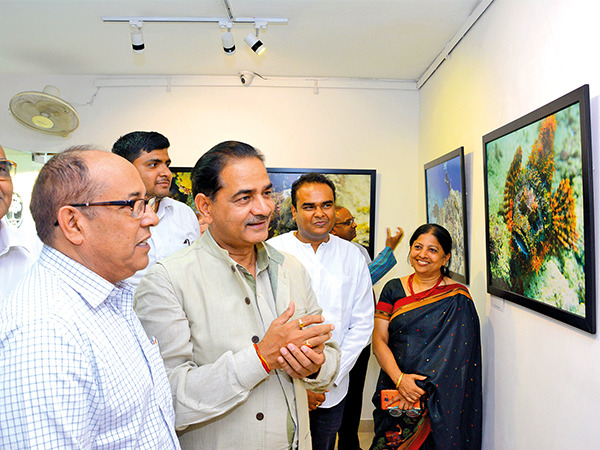Gorakhpur, UTTAR PRADESH / NEW DELHI :
Celebrating works of female photographers, an exhibition was mounted in New Delhi’s Indira Gandhi National Centre for the Arts
You would be familiar with the ‘male gaze’, a term coined by feminist critic Laura Mulvey, which states that the point of view of almost all cinema or photograph is masculine. But if one pays attention to the recent trend in photography, women are actually taking back the gaze. Female gaze can be ascribed to anything photographed by a woman and in that process frees females from the “male-constructed” photographs that have developed an image of femininity in our minds throughout the history of image making.
Similar themes were central to Prof. Farhat Basir Khan’s recently concluded exhibition Feminography at the Indira Gandhi National Centre for the Arts, which was the result of his observations and curated work of female photographers which includes media practitioners, teachers, scholars, writers, mothers and daughters.
On the rationale of holding an exhibition based on women’s perspective of the world, Prof. Khan, who also teaches photography at MCRC, Jamia Millia Islamia, said: “Feminography celebrates the work of women in India and their journey of both being and becoming a woman. It is a narrative of the people, places and spaces, and the relation women shares within it, which is shot through the lens.”
Prof. Khan is happy that more and more women are now asserting their position through social media platforms like Instagram and the broader perspective on the way we look at the woman is changing through it. It is also reflected in the shifting of many institutional magazine’s portrayals of women, which are now showing them as a character in a visual narrative, not as an object of desire.
Transcending barriers
Nitisha Malick takes inspiration from urban eccentricities and captures the connection with the wilderness in her picture Maids Of Gurgaon. “I wanted to show the emotions of those women who live in the shadows of modern cities but their life is still very far from development,” said Mallick, while explaining her work. In an another picture, she explored the contentment of a girl despite all hardships and challenges in her life. All images shown were powerful stories of cities andspaces that women photographers inhabit and the barriers that they transcend.

Some were independent memories shot with a half smile; others with grit and determination, still others with a gentle non-abrasive press of a shutter. Saumya Khandelwal’s “Child Bride in Shravasti”, questions the life of young married girls yet reflects the happiness that they have built for themselves. “The subjects in the works includes forms and textures – the mundane and the ordinary which is transcending them into works of art to frame, admire and cherish,” concluded Prof. Khan.
source: http://www.thehindu.com / The Hindu / Home> Entertainment> Art / by Atif Khan / January 04th, 2017









